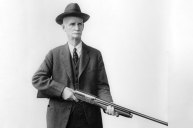The beautiful plinker and small-game gun was engineered by a man John Browning deemed the best to ever design a gun.
"Long time ago, when I was 11 years old, there used to be a park in Kansas City called Fairyland Park," one person recalled on a shooting forum. "It had a wood roller coaster and all the other rides. Tucked into one corner was a shooting gallery.
"The guns were Winchester pump .22s cabled to the counter, and for, I think, 25 cents you would be given a rifle with 15 .22 Shorts to shoot at all the moving targets. You even reloaded them yourself. They had the ducks, the pipes, the stars, the cowboys, everything you've ever seen in movies and old cartoons. It was the most fun I ever had."
It would be fair to say that the success of the Winchester Model 1890 directly influenced the development of the Remington Model 12.
Eager to get a piece of the sales that the 1890 was earning—almost 850,000 units sold from 1890 to 1941—Remington enlisted the aid of John Douglas Pedersen to design a similar pump-action rimfire rifle.
Pedersen and the military
Pederson was a gun-designing contemporary of famed firearm designer John Browning. But Browning mistakenly thought Pedersen would be better remembered than himself.
In fact, Browning told U.S. Army Major General and noted firearms expert Julian S. Hatcher that Pedersen "was the greatest gun designer in the world." Browning's assessment of Pedersen may have turned out to be true had fate not intervened to deal Pedersen some serious spotlight-stealing blows.

John D. Pedersen Find a Grave
However, Pedersen is remembered for a few highly noteworthy firearms innovations and designs. His attempts to gain military contracts for his gun designs were marred mostly by bad timing and bad luck.
For example, his .45 pistol design was approved by the U.S. Navy but it ultimately lost out to the M1911 pistol already being manufactured for the Army. His semi-auto rifle design also lost out to the now iconic Garand rifle.
His Pedersen Device was perhaps his most ambitious design and could have made a significant impact during WWI. It was an innovation that attached to a M1903 Springfield bolt-action rifle that allowed it to operate as a semi-automatic. Unfortunately for Pedersen, the device was approved for production just as the war was ending.
But as something of a moral victory, General George S. Patton owned one of Pedersen's pistols, the Remington Model 51. Patton was thought to have favored the pistol as his personal sidearm and it can be seen in many photographs of the General.
Pedersen also attempted to mass produce M1 carbines for the military during WWII, via his own company, the Irwin-Pedersen Arms Company, but that endeavor also failed.
Civilian market
Pedersen actually collaborated with Browning, when Browning made the principle design for the Remington Model 17 pump-action shotgun. Pedersen altered Browning's design before production by the Remington Arms Company in 1921. The 20-gauge shotgun featured a tubular magazine, bottom-loading and bottom-ejecting portals, and it was hammerless. The Model 17 later became the Remington Model 31, Ithaca 37 and Browning BPS, all very successful shotguns in the civilian market.
Pedersen either designed directly or had a hand in just about every firearm that Remington produced from 1903 to 1940. He was prolific, earning at least 69 patents for his firearms designs. These included the Model 12, 14, and 25 pump-action rifles, and the Model 10 pump-action shotgun.
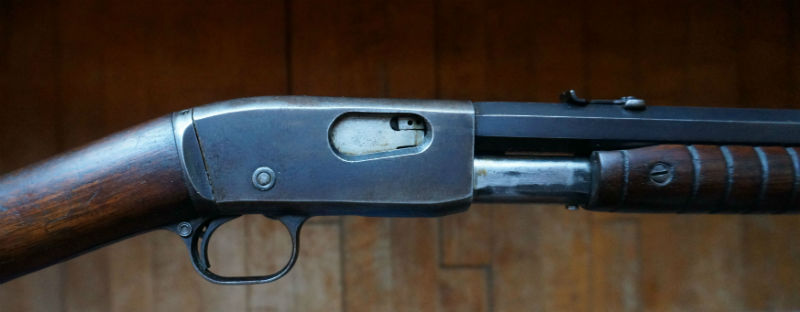
Remington Model 12
It could also be fairly said that Pedersen had an indirect hand in the design of the famous Remington 870 pump-action shotgun, in that several of his design elements are present in that famous gun.
Pedersen died of a heart attack in 1951 while traveling through Cottonwood, Arizona. He was 70 years old.
Over the course of his career, Pedersen designed many firearms that were popular with hunters and shooting enthusiasts. His designs were lauded for their workmanship and efficiency, although they were sometimes criticized for being more mechanically complicated than they needed to be. Today, his guns are highly regarded by collectors and shooters.
The Model 12 Remington
While the Model 12 design was undoubtedly influenced by the Winchester 1890, Pedersen engineered it to have a much sleeker, less clunky appearance. It's a trim, more modern-looking long rifle than the 1890, but with enough antique features that make it beautifully distinctive compared to today's rimfire rifles.

Winchester Model 1890 Rock Island Auction

Remington Model 12
For one thing, it dispenses with the exposed hammer of the 1890. Featuring an internal-hammer receiver, the rifle looks sleek and efficient. This profile undoubtedly appealed to shooters, and Winchester eventually began producing pump-action rimfire rifles replicating the internal-hammer design.
The Winchester Model 61 .22 WRF was released in 1932 and appears to be, with a few notable exceptions, almost a carbon copy of Remington's Model 12.
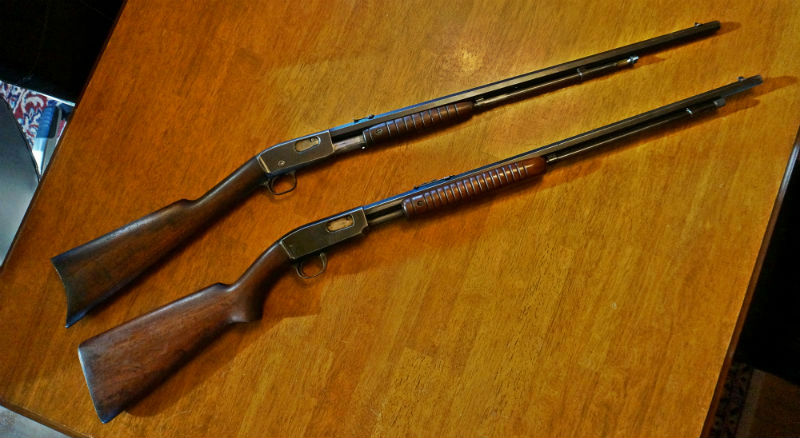
Remington Model 12 (top)
Winchester Model 61 (bottom)
Another identifying component of the rifle is the unique teardrop-shaped ejection port on the right side of the receiver. Chambered for .22 Short and .22 LR, the cartridges are loaded in an under-barrel magazine tube.
Interestingly, the forestock is attached directly to the magazine tube, unlike in other slide-action guns where the magazine remains stationary and separate from the forestock.


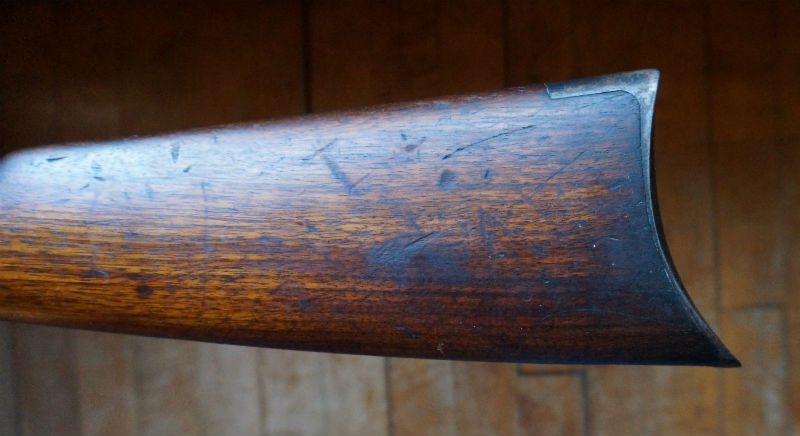

Both the Model 12 and the 1890 have a straight grip stock, but the comb on the 1890 is less pronounced on the model 12. The metal butt plate is also gently concave, lending a cool, old timey appearance to the gun.
But the feature I love the most on this Remington rifle is its octagon barrel. Nothing says vintage long gun to me quite like an octagon barrel.
The safety is located at the right rear of the trigger guard. There is also a small button at the top inside of the trigger guard that can be depressed to release the pump should it become locked in place.
The rifle can also be broken down into two parts by removing a screw knob on the left side of the receiver, for ease of transporting or cleaning.
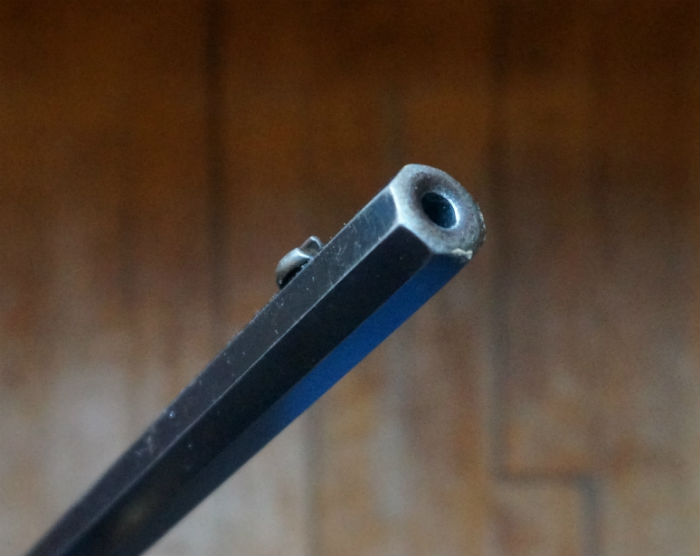

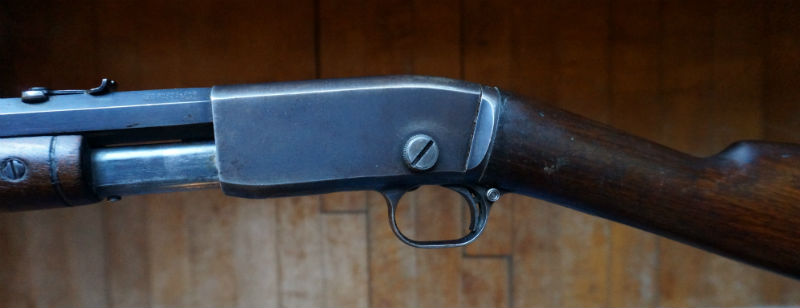
Remington issued a number of variations—Model 12A, Model 12B, Model 12C and so on—that differed in barrel length and ammunition caliber variations, had round barrels and pistol grip stocks, as well as a few customizable features. As you went up in the alphabet—model 12D, 12E and 12F—you could special order one of the pump rifles with higher-quality wood, gold or silver inlays and deluxe embellishments, such as special front and rear sights.
I've looked at several lists of the various models and their corresponding features and none of those lists exactly matches the others, so until I can find an actual record from the Remington Arms Company specifically outlining what each variation entailed, I can't say for sure what exactly is what.
I do know my rifle is either a 12A, 12B or 12C, probably a Remington 12A standard model, although there's some uncertainty regarding that. According to its serial number, I believe it was manufactured in 1913.
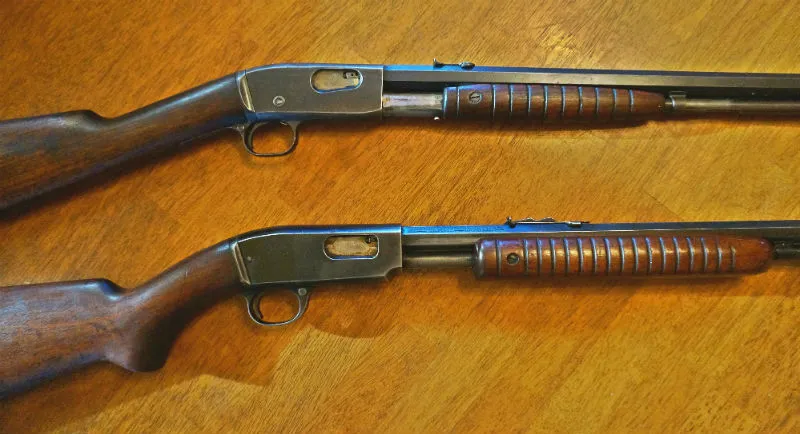
Remington Model 12 (top)
Winchester Model 61 (bottom)
All good things must come to an end
The Remington Model 12 was discontinued in 1936. The sleek little rifle saw impressive sales from 1909 to 1936, with more than 830,000 units coming out of the factory. The Model 12 was replaced by the Remington Model 121 Fieldmaster, a beefier pump-action .22.
The Fieldmaster was designed by C.C. Loomis and G.H. Garrison, though it clearly recalled some of John Pedersen's influence. The Model 121 was produced up until 1954, selling nearly 200,000 units.
Carrying and plinking
I love to carry this light, easy-shooting rifle. It's almost as light as carrying a heavy revolver. I haven't shot it much, to be honest. For small-game hunting I prefer to use my Marlin Golden 39A .22 lever-action. Mostly I just like looking at and holding that old Model 12. But when I do feel like taking it out, maybe once a year, I'll load it with .22 Shorts and do a little imaginary carnival plinking at soup cans, bottle caps and plastic dinosaur toys. It's surprisingly accurate, given its age and barrel wear.
But most importantly, it takes me back to a time I imagine was simpler...a time where you could have a lot of fun for only a quarter.
Like what you see here? Experience more articles and photographs about the great outdoors at the Facebook page, Stumpjack Outdoors.
NEXT: WHAT I GOT FROM MY FIRST SQUIRREL HUNTS WITH MY DAD
WATCH
https://rumble.com/embed/u7gve.v3trit/

